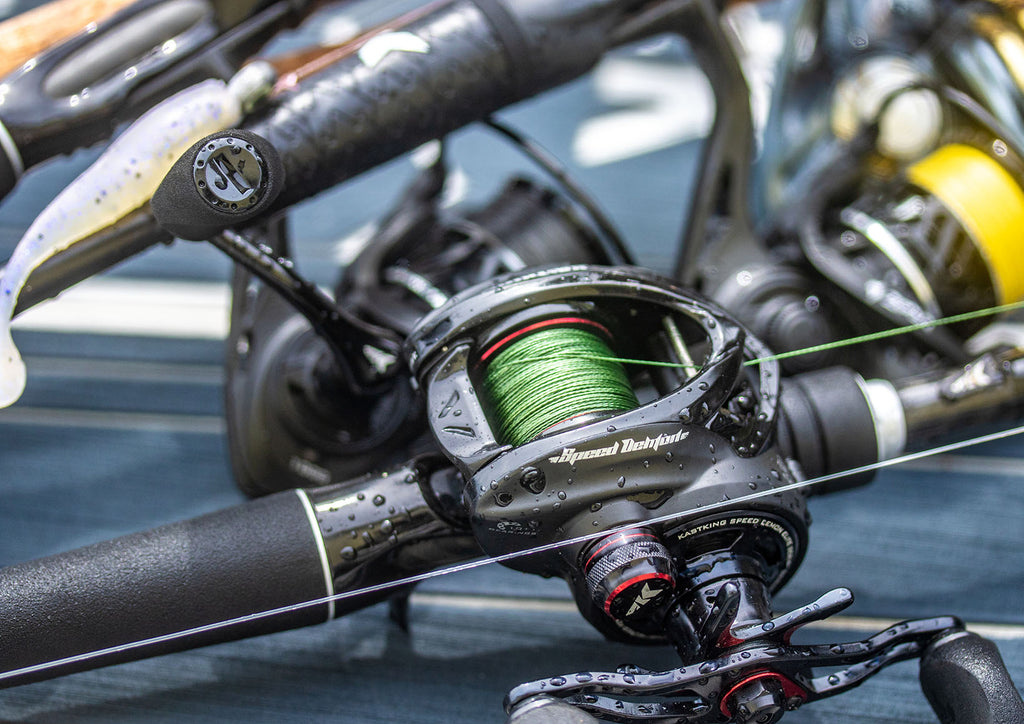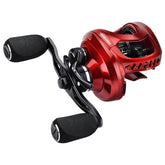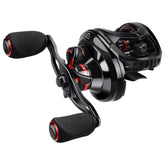
Best Bet: Pound of Braided Fishing Line for Bass
Since the advent of modern day braided fishing lines for bass, anglers have struggled with what pound test they could actually use. "I always had 20-pound test monofilament for cranking on my reel, should I use 20-pound braided fishing line or heavier because it is thinner?" "Braided fishing line floats, can I use it in deep water?" There are a hundred more questions regarding braided fishing line for bass, let's explore some scenarios to make sure you are using what I believe is the best pound test for a specific style of fishing.
Bear in mind, although braided line floats, you can in fact use it for all types of fishing. The thinner diameter per pound test will make up for the lack of sink as compared to monofilament or fluorocarbon. On the other hand, working a topwater bait with a heavier pound test braided fishing line makes the lure "work" better, plus the extra pound test helps with break-offs, or the lack thereof.
One of the first determinations you will have to make is what you plan on throwing. Like every aspect of bass fishing, using the "right" equipment for the job is critical. And, your braided fishing line pound test is super critical!

Even in my early days of angling I always used the lightest line I could get away with. I was always concerned about distance more so then breaking strength. In the late 70's while fishing under the famed Montauk Point Lighthouse for striped bass, we used 15-pound test pink Ande monofilament line. Sure we broke off a lot, but reaching the "rip" was paramount on catching these fish. The thinner, but lighter diameter 15-pound test Ande made that possible. When braided fishing lines came out I saw anglers spooling up with 30 and 40-pound braided line because it was the diameter of 15-pound braided line. For me, I stuck with 15 or 20-pound braided line and now could reach rips even farther away from the shore while others stood in awe as I hooked fish-after-fish.
Lighter is better… most of the time!
When choosing the best braided line for bass fishing, for the most part, I always choose the lightest I can get away with, but not necessarily lighter than the mono or fluorocarbon I was using before braid became popular. While drop-shot fishing I would use 6-pound monofilament line. When I switched to braids I opted for 10-pound braided line because it was the diameter for 4, but strength of 10. I also, due to the braid being very visible in the water, I added in a 6-pound test fluorocarbon leader.
On the opposite end of the spectrum, when jig or Texas style fishing with mono, you could really only use up to about 20-pound test due to the line diameter. The thicker mono would fill the spool, cutting down on any distance you may need. With the braided fishing line, I could use 40-pound test braid, but have the diameter of about 12-pound test mono. This gave me a higher pound test rated line and enough line for any situation. Again, I always used a leader of mono or fluorocarbon due to visibility. To clarify visibility, braid is like a shoelace in the water…big and visible even though it is thin. The only time I would tie direct with braid is using a topwater frog, Whopper Plopper or mouse soft plastic in weed beds or lily pad fields. In this situation, a bass is crashing through beds, so line site is minimal.
- 6-10 Pound braided line
- Drop shot, finesse baits, clear water
- 10-15 Pound braided line
- Shallow crankbaits, spinnerbaits, Worms
- 15-20 Pound braided line
- Topwater poppers, blade baits
- 20-30 Pound braided line
- Jigs, spoons, heavier topwater baits and spinnerbaits
- 30-50 Pound braided line
- Frogs, Whopper Ploppers, Large swimbaits, Texas Rigs
These are just a few examples of the right pound test braided fishing line for bass. There are many other baits where braided fishing line can be used. In fact, braided line can be used in virtually every situation, you just have to make sure to pick the correct pound test.
Float vs sink
We all know that braided line floats, so why would I use it in situations where I want a bait to get deep? In deep diving crankbaits, most anglers will opt for fluorocarbon line between 17-20 pound tests. Fluorocarbon line sinks, allowing the bait to get deep. However, I feel that braided line in the same pound test, being so thin and so much less resistance in the water will get that bait just as deep, and just as quick. If you are using a suspending style bait like a jerkbait, braided line and its floating capability may make working that bait easier due to the lack of stretch.

On the floating side of things, I absolutely love using braided fishing line in 15-20 pound test for Zara Spook fishing. I can make that Zara Spook dance like there is no tomorrow, and get zero arm fatigue while fishing all day.
The right pound test braided fishing line can be summed up as far as I believe very easily. For me, I will always use the lightest pound test braided line I can get away with and still land a fish, and work whatever lure I am using to the best of its ability. The only time I will use a heavier braided line then most will feel it is needed is in heavy cover where basically winching a 5 pound bass or large through heavy slop is made easier due to the braid cutting through like a knife and never breaking due to the high pound test.
If you are thinking about switching to braided line for bass, just use this rule of thumb… for the most part, use the same pound test braided line as you would use if using monofilament or fluorocarbon. If you find you are losing fish due to breakoffs, go one rating higher. Braid is a great line, and although it has some limitations, you can't go wrong by using it.













